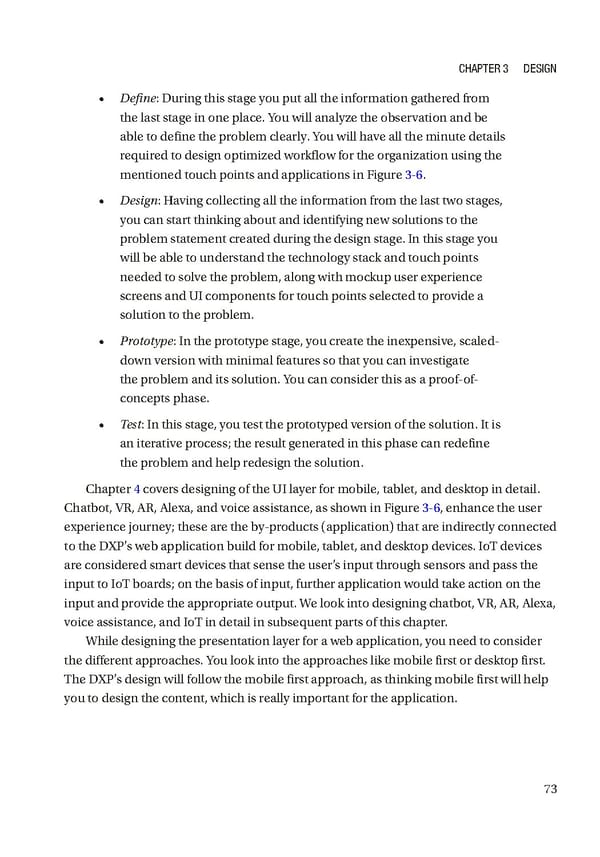Chapter 3 Design • Define: During this stage you put all the information gathered from the last stage in one place. You will analyze the observation and be able to define the problem clearly. You will have all the minute details required to design optimized workflow for the organization using the mentioned touch points and applications in Figure 3-6. • Design: Having collecting all the information from the last two stages, you can start thinking about and identifying new solutions to the problem statement created during the design stage. In this stage you will be able to understand the technology stack and touch points needed to solve the problem, along with mockup user experience screens and UI components for touch points selected to provide a solution to the problem. • Prototype: In the prototype stage, you create the inexpensive, scaled- down version with minimal features so that you can investigate the problem and its solution. You can consider this as a proof-of- concepts phase. • Test: In this stage, you test the prototyped version of the solution. It is an iterative process; the result generated in this phase can redefine the problem and help redesign the solution. Chapter 4 covers designing of the UI layer for mobile, tablet, and desktop in detail. Chatbot, VR, AR, Alexa, and voice assistance, as shown in Figure 3-6, enhance the user experience journey; these are the by-products (application) that are indirectly connected to the DXP’s web application build for mobile, tablet, and desktop devices. IoT devices are considered smart devices that sense the user’s input through sensors and pass the input to IoT boards; on the basis of input, further application would take action on the input and provide the appropriate output. We look into designing chatbot, VR, AR, Alexa, voice assistance, and IoT in detail in subsequent parts of this chapter. While designing the presentation layer for a web application, you need to consider the different approaches. You look into the approaches like mobile first or desktop first. The DXP’s design will follow the mobile first approach, as thinking mobile first will help you to design the content, which is really important for the application. 73
 Building Digital Experience Platforms Page 92 Page 94
Building Digital Experience Platforms Page 92 Page 94